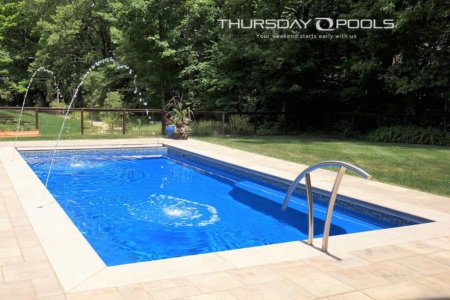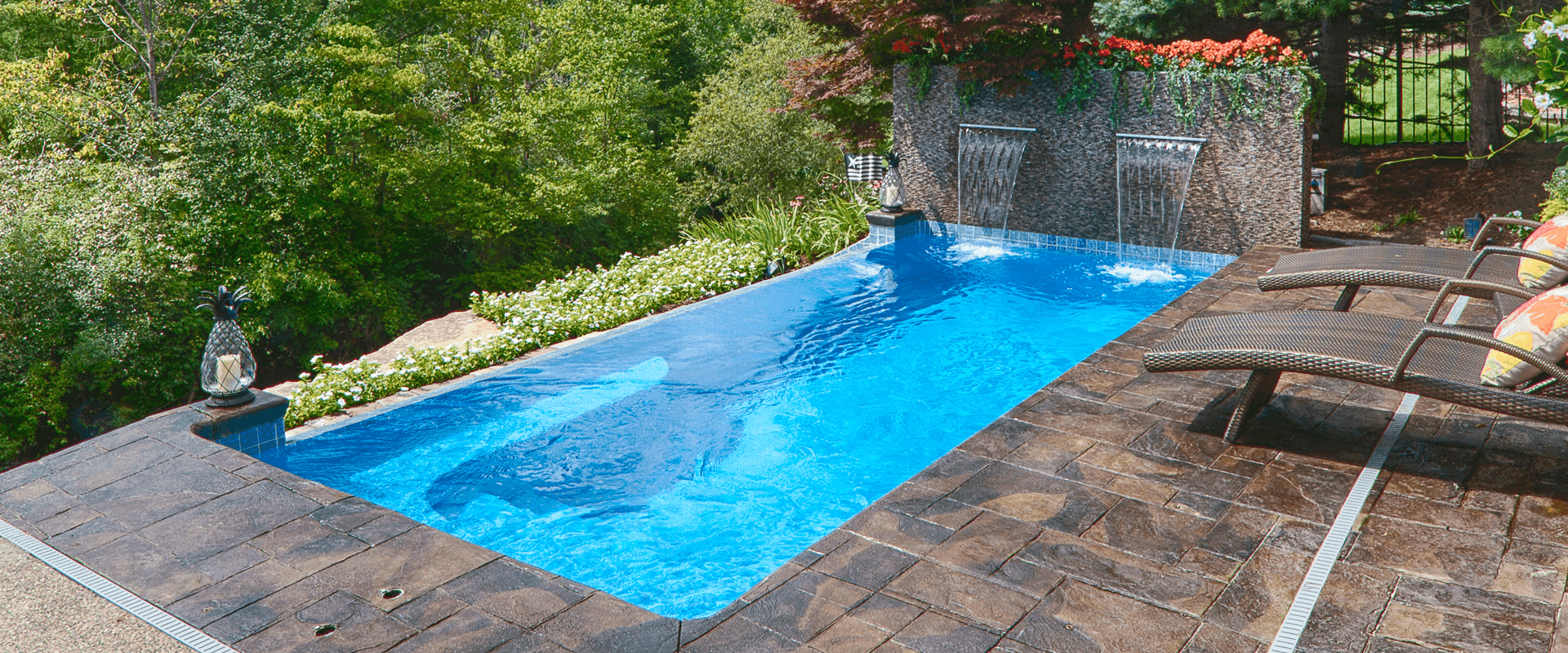877-929-7665
How Do I Know If I Have A Groundwater Issue?
 Groundwater is virtually everywhere. It lies below the earth’s surface in the cracks and spaces of soil, rock, clay, and sand. In some areas, it may be closer to the surface than in others. The upper level of which the ground saturates with water is known as the water table. Often homeowners know they have a ground water issue when they have a high-water table. Their yard may remain soft and wet for many days after rain. Your water table does vary over time and is generally at its highest later winter/ early spring. Even if you do not have a high-water table, you still need to be aware that ground water exists and can have damaging effects on your fiberglass pool if it is not accounted for properly.
Groundwater is virtually everywhere. It lies below the earth’s surface in the cracks and spaces of soil, rock, clay, and sand. In some areas, it may be closer to the surface than in others. The upper level of which the ground saturates with water is known as the water table. Often homeowners know they have a ground water issue when they have a high-water table. Their yard may remain soft and wet for many days after rain. Your water table does vary over time and is generally at its highest later winter/ early spring. Even if you do not have a high-water table, you still need to be aware that ground water exists and can have damaging effects on your fiberglass pool if it is not accounted for properly.
Here are some ways you and your pool builder can prevent and reduce the risk of groundwater issues:
Install a well pit or sump pit. A well pit or sump pit is usually an 8”-10” corrugated pipe that runs from the top of the deck to 1’ below the deepest depth of an inground swimming pool. The well pit allows you the ability to visually see when groundwater is present and when necessary to be able to drop a pump to pump the groundwater away from the pool.
Install a perimeter drain. Install a perimeter drain around the base of the excavated pool area. A perimeter drain will provide the water an easy path to the well pit.
Maintain proper water level. Most groundwater damage to inground pools happens when a pool is empty, or the water level is low. This provides an easy opportunity for the groundwater pressure outside the pool to exceed the internal pressure of the pool.
Reroute downspouts. Ensure that downspouts are rerouted out and around the pool.
Regardless of whether or not you believe you have a groundwater issue, these simple steps can drastically reduce the risk of groundwater issues associated with inground pools. Talk to your pool builder about including them as part of your inground pool project.
